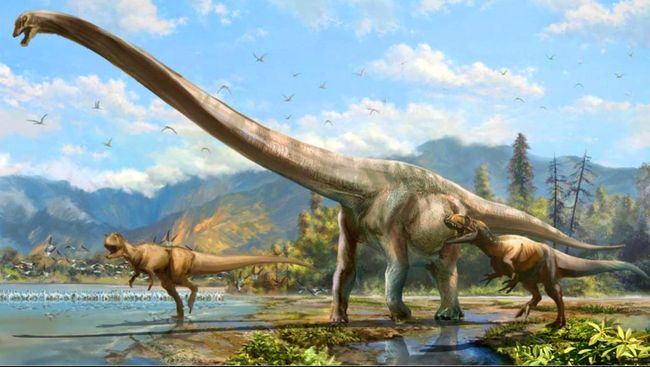Jakarta, CNN Indonesia —
A recent study has found that the blazes have scorched the forest in Antartika 75 million years ago, when dinosaur still roaming the Earth.
During the late Cretaceous period or the late Cretaceous period (100 million to 66 million years ago) which is one of the hottest periods on Earth, James Ross Island in Antarctica was home to temperate coniferous forests, ferns, and flowering plants known as Angiospermae.
Although the place is not fully present as a ‘paradise’, ancient paleo-fire burned parts of the forest to dryness, leaving behind the remains of charcoal that scientists have now taken up and studied.
“This finding expands knowledge about the occurrence of vegetation fires during the Cretaceous period, suggesting that such episodes were more common than previously thought,” said Jorge de Lima, a paleobiologist at the Federal University of Pernambuco in Recife, Brazil and lead researcher on the Flaviana study.
Research published online on October 20 in the journal Polar Research it marks the first evidence in the paleo fire record on James Ross Island, part of the Antarctic Peninsula in what is now southern South America.
In addition, this discovery adds to evidence that spontaneous fires were common in Antarctica during the Campanian epoch (about 84 million to 72 million years ago).
Quotes Science Direct, a study in the journal Palaeogeography, Palaeoclimatology, Palaeoecology, in 2015, in a separate study, researchers documented the first known evidence of dinosaur age wildfires in West Antarctica.
An international team of scientists analyzed the fossils collected during the 2015-2016 expedition to the northeastern part of James Ross Island. These fossils contain plant fragments that look like charcoal residue, which has weathered over the last tens of millions of years.
The charcoal fragment is tiny it measures just 0.7 by 1.5 inches (19 by 38 millimeters). But scanning electron microscope images revealed their identities. This fossil is probably gymnospermae burned, and possibly from the botanical family of coniferous trees called Araucariaceae.
Reported from Science Alert, intense forest fires were frequent and widespread during the late Cretaceous period, most of the evidence of these fires being located in the Northern Hemisphere, with a few documented cases in the Southern Hemisphere in what is now Tasmania, New Zealand and Argentina.
During the late Cretaceous period, the supercontinent Gondwana broke apart and left places like Antarctica more isolated than ever. The researchers note that this ice-free region has many sources of ignition, including lightning strikes, fireballs from falling meteors, and volcanic activity, as well as flammable vegetation and high oxygen levels that help fires burn easily.
“Antarctica had intense volcanic activity caused by tectonics during the Cretaceous period, as indicated by the presence of fossil remains in strata associated with ash fall,” the researchers wrote in the study. “It is plausible that volcanic activity triggered the paleo-era forest fires that created the charcoal reported here.”
Currently, researchers are looking for new records of paleo fires in other locations in Antarctica.
(mrh/ex)
– .


:quality(80)/cdn-kiosk-api.telegraaf.nl/8dad80f0-3a99-11ec-b769-02d2fb1aa1d7.jpg)